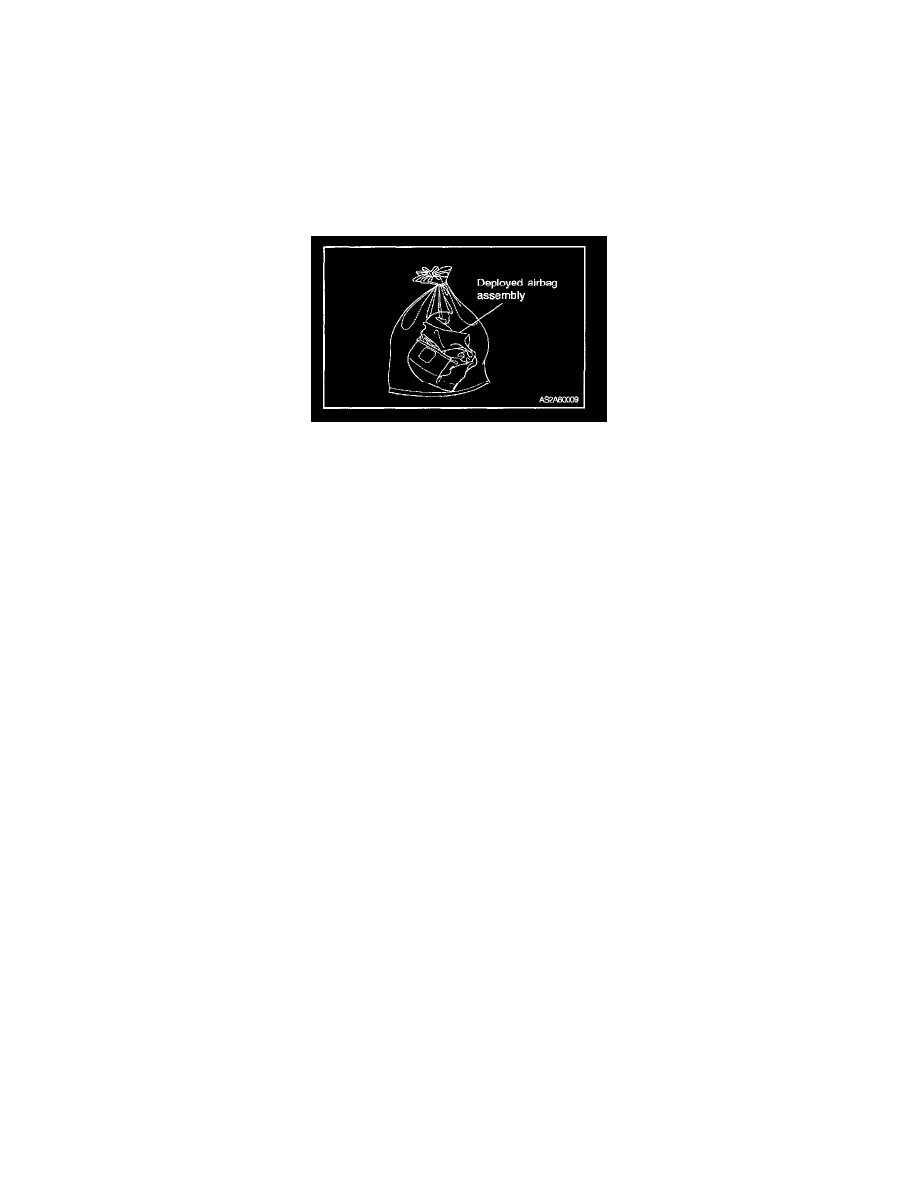Sephia GS Sedan L4-1.8L (1997)

10. Verify that the yellow READY indicator is flashing.
11. Depress and hold the DEPLOY button (button number 2).
12. Verify that the Air Bag module has deployed. If not, verify that the red DEPLOY indicator is illuminated.
13. Release both the READY and DEPLOY buttons.
14. Verify that both the READY and DEPLOY indicators are no longer illuminated.
15. If the air bag successfully deployed, allow a minimum of twenty minutes for the bag to cool before handling. Monitor the bag throughout the
cooldown period to ensure that the hot components do not start a fire.
16. If the air bag did not deploy, keep the area around the deployment site clear of personnel for a minimum of 30 minutes.
17. Disconnect the power leads from the battery.
18. Remove the air bag from the stack of tires carefully, wearing rubber gloves and eye/face protection to protect yourself from possible chemical
exposure.
19. Dispose of the complete air bag assembly. No part of the air bag may be reused. Place the air bag into a sturdy plastic bag and seal securely.
Dispose of the deployed air bag according to federal, state and local laws and regulations including, but not limited to, EPA and OSHA
regulations.
Air Bag Deployment and Disposal Precautions
-
Failure to follow all warnings, cautions, notices and procedures could result in personal injury or death.
-
The surface of a deployed air bag may contain small amounts of sodium hydroxide (NaOH). Prevent contact of air bag module with liquids,
combustibles, and flammable materials. Immediately wash hands and exposed skin areas with mild soap and water. Flush eyes with water if
exposed to by-products. Failure to following these instructions could result in chemical burns and personal injury.
-
A live (undeployed) air bag module may accidently deploy during handling. When carrying a live air bag module, point the trim cover away from
your body to lessen the chance of injury in case of accidental deployment. Never carry the module by its wiring or connectors.
-
Always place live air bag modules face up to lessen motion of the module in case of accidental deployment. Keep the area clear of parts, tools, and
debris.
-
Never place items on or above the trim cover of a live air bag module. In case of accidental deployment, such items may cause serious injury or
death.
-
Damaged air bag modules should be stored away from all acids, halogens, heavy metals, and metal salts. Damaged units may produce hydrazoic
acid if exposed to liquids. If an undeployed air bag module or inflator is ruptured or tampered with, refer to the particular module's MSDS
(Material Safety Data Sheet) for important information concerning the constituents of undeployed modules. Exposure to high concentrations of
propellant mixture can cause headaches, nausea, blurred vision, faintness, cyanosis, lowering of blood pressure or tachycardia. Failure to comply
with this warning can result in fire, noxious fumes, severe personal injury, or death.
-
Air bag module components are very hot after deployment. Units should be deployed outdoors or in an open area to prevent fires. Allow
components at least twenty minutes to thoroughly cool. Cooling modules should be continuously monitored to ensure hot components do not
create fires with spilled liquids or other debris. Failure to allow the unit to cool could result in burns, fires or personal injury.
-
Always wear rubber gloves and safety glasses when handling a deployed air bag and module.
CAUTION
Storage, transportation, disposal and recycling of air bag module and components must be performed in accordance with all applicable Federal,
State and local regulations including, but not limited to, those governing fire codes, environmental protection, occupational health and safety, and
transportation.
